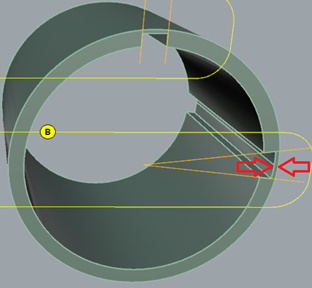Hi Rolf
Here are my 2.5 ¢ (CDN) to your predicament.

Q1
Providing the distance “d” is the same in all instances, all designs are going to transfer torque the same way. The distance “d” will dictate the shearing plane that will size up the key’s width and length, to withstand a torque X at a safety factor of whatever you can afford. From my own experience here is what I think of all options:
Design A
It is widely used across industry because of ease of manufacturing. You can cut the shaft (axle) with a cylindrical end mill and the key channel in the outer ring with a rectangular broach. The keys themselves are cut to size from standard stock bars.
The problem with this design is in case you are using loose tolerances (needed for ease of assembly), it will lead to a small play of the outer ring on the axle, which in the long run will end up shearing up your key. The key starts to slide in two different directions exactly at the shear plane. This design had given me headaches many times when trying to replace the key.
Design B
Making the right size key slot becomes an art. If for instance on the outer ring you use a broach to that profile and you don’t hit the sweet spot as marked “?” in my picture, you either have a play when you go too deep, or you cannot install the key if you go to shallow. The shaft is not that critical as you can always use a tapered end mill and cut a deeper channel.
Design C
If this was my project I would use this design. This way the cutting of the outer ring key channel does not need to be that precise anymore. To avoid the key moving at all, I would hold it to the shaft with a screw.
Q2
In regards to the key channel in the axle, I believe the tapered design is slightly better than the straight design. Why? Because the tapered key channel side walls are wider than that of the straight channel, and also the distribution of stresses to that side surface would be rather perpendicular to it (slightly better condition than on the straight wall).
Q3
I don’t understand it fully, but I think if this is a scaled model, then this outer ring channel is not meant to last. Your keys, no matter the design, may end up ripping thru your ring.
If you follow my picture, the meat on top of the key in the ring is thicker that the depth of the channel in the same ring and that way I know if anything goes it will be the key and not the ring.
Regards
Costel










 (I actually didn’t answer as of yet, but final design is a completely different story. I’m only roughing out a basic idea so far).
(I actually didn’t answer as of yet, but final design is a completely different story. I’m only roughing out a basic idea so far).